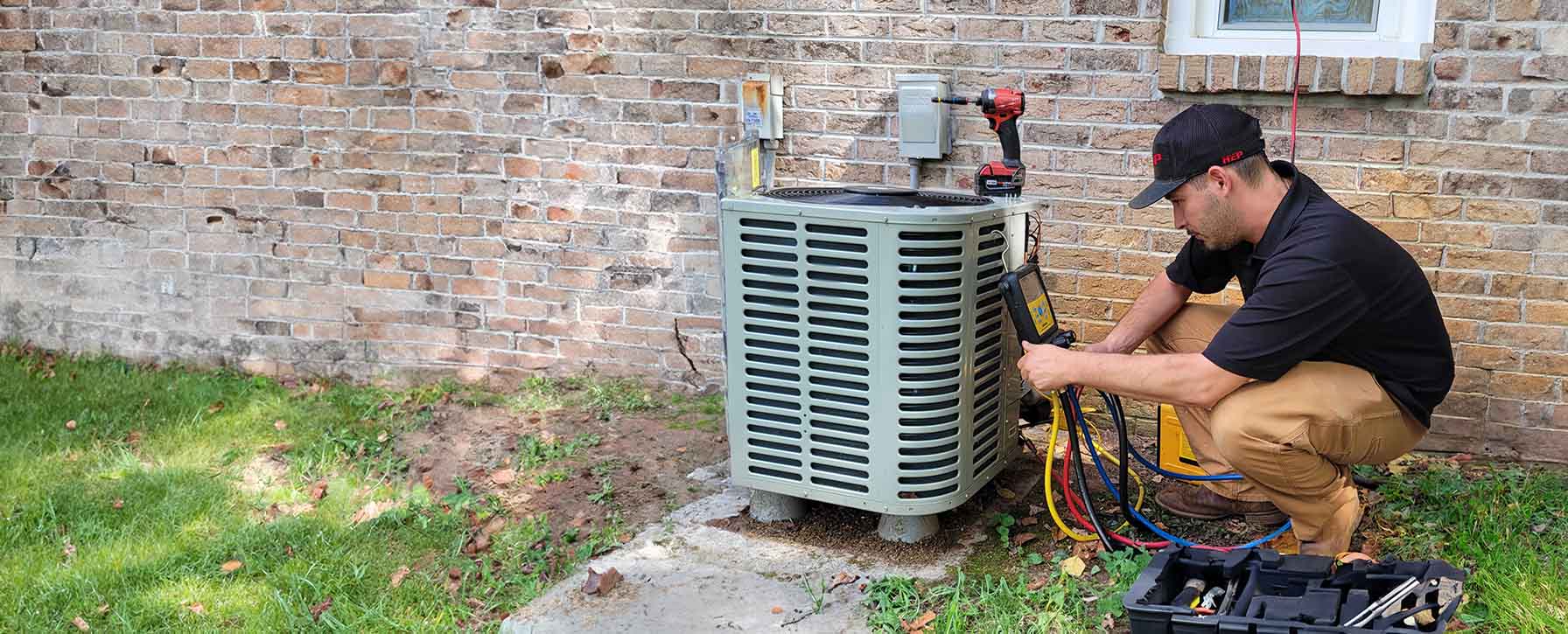

Indoor Environment
Your trusted partner for professional home services. Quality workmanship, guaranteed satisfaction.




- HEP
- Indoor Environment
Indoor Environment | Ventilation and Air Quality | Heating and Air Conditioning | New Tazewell
When New Tazewell homes feel stuffy in summer or sealed-tight in winter, HEP’s certified HVAC pros step in with smart solutions that let you breathe easier. We assess every room’s airflow, humidity, and contaminant levels, then tailor equipment—from Energy Star heat pumps to whisper-quiet ERVs—that balances temperature and fresh air exchange without wasting a watt. The result is noticeably cleaner, lighter air and a comfort zone that follows you from the breakfast nook to the bonus room.
Beyond installation, our team safeguards your investment with routine tune-ups, duct sealing, and filter upgrades that keep allergens, odors, and excess moisture at bay year-round. It’s a proactive approach to ventilation and air quality that protects your family’s health while trimming utility bills and extending system life. Ready for a breath of fresh air? One call to HEP brings prompt service, transparent pricing, and the peace of mind that your indoor environment is finally working for you.
FAQs
Why is indoor air quality especially important in New Tazewell?
Claiborne County’s four-season climate means homes in New Tazewell are closed up for long stretches in both summer and winter. Without adequate ventilation, pollen from our rural surroundings, moisture from Norris Lake, and combustion by-products from heating systems can accumulate inside. High indoor pollution levels are linked to allergies, asthma flare-ups, and general discomfort. A well-maintained HVAC system with proper filtration and mechanical ventilation dilutes these contaminants, keeping your family healthier year-round.
How often should I replace or clean my HVAC air filters?
For most homes in New Tazewell, we recommend checking filters monthly and replacing (or washing, if reusable) at least every 60–90 days. If you have pets, smokers, or household members with allergies, change them every 30 days. During peak pollen season in spring and peak heating in winter, dirty filters can reduce airflow by up to 15 %, forcing the system to work harder and raising energy bills. Mark a calendar reminder or ask us about installing a filter change indicator that alerts you automatically.
What ventilation solutions work best for older or tightly sealed homes?
Older homes often lack dedicated fresh-air ductwork, while recently remodeled houses are sealed so tightly that stale air is trapped inside. Energy-recovery ventilators (ERVs) and heat-recovery ventilators (HRVs) are compact units that exchange stale indoor air with filtered outdoor air while transferring heat and, in the case of ERVs, humidity. They integrate with your existing ductwork, meet current building codes, and can cut ventilation energy costs by up to 40 % compared with exhaust-only fans. Our technicians can perform a blower-door test to size the right ventilator for your square footage and climate zone.
Can controlling indoor humidity really improve comfort and lower energy bills?
Absolutely. Ideal indoor relative humidity is 30–50 %. In summer, excess moisture makes 75 °F feel several degrees hotter, forcing you to crank down the thermostat. A whole-home dehumidifier removes pints of water per day, letting you raise the thermostat 2–3 °F and still feel comfortable—often cutting cooling costs 5–7 %. In winter, a steam or bypass humidifier adds moisture, preventing dry skin and helping you feel warmer at lower temperatures. Balanced humidity also protects hardwood floors, musical instruments, and electronics from seasonal damage.
Do I need an air purification system if I already have central heating and cooling?
Standard HVAC filters stop large dust particles but let smaller allergens, bacteria, and VOCs pass through. If anyone in your household suffers from allergies, COPD, or frequent colds, or you notice lingering cooking or pet odors, an add-on purifier can help. Options include MERV-13 media filters, hospital-grade HEPA bypass filters, UV-C lamps that neutralize bio-growth on coils, and advanced photocatalytic oxidation units that break down chemical fumes. We can test your indoor air, explain each technology’s pros and cons, and tailor a solution that fits your budget and health priorities.
Are there any local rebates or tax incentives for upgrading HVAC or air-quality equipment in New Tazewell?
Yes. Tennessee Valley Authority’s EnergyRight program offers rebates when you install qualifying high-efficiency heat pumps, smart thermostats, or duct sealing. Federal tax credits under the Inflation Reduction Act cover 30 % of costs (up to $2,000) for heat pumps and $600 for high-efficiency air cleaners or ventilation fans that meet ENERGY STAR® criteria. Some equipment must be installed by a TVA-approved contractor—our team meets those requirements and will file the paperwork for you. We’ll also let you know about occasional manufacturer rebates and low-interest financing through local utility partners.